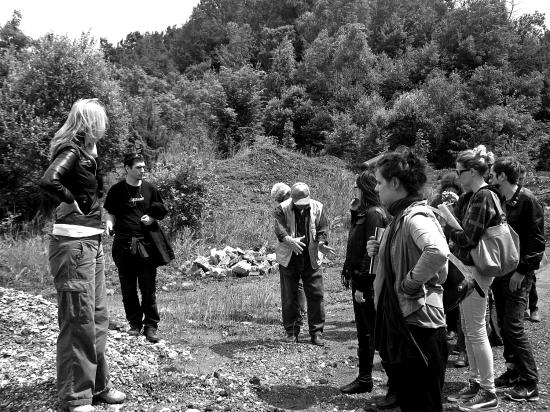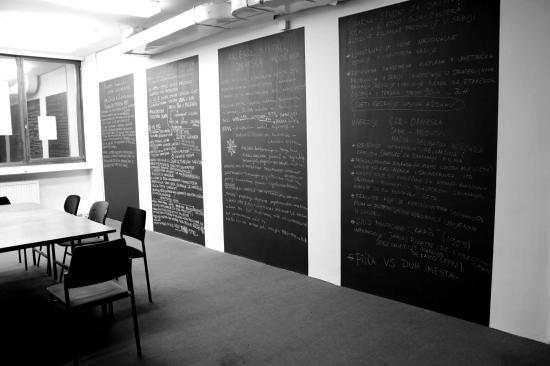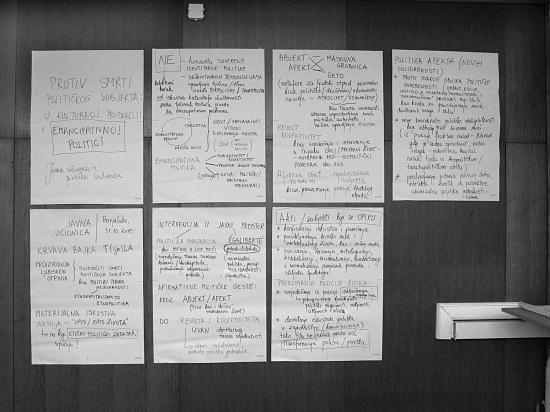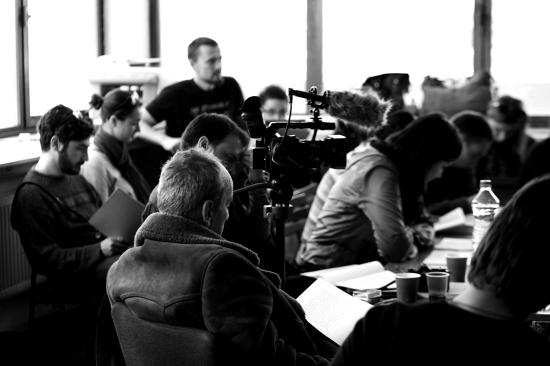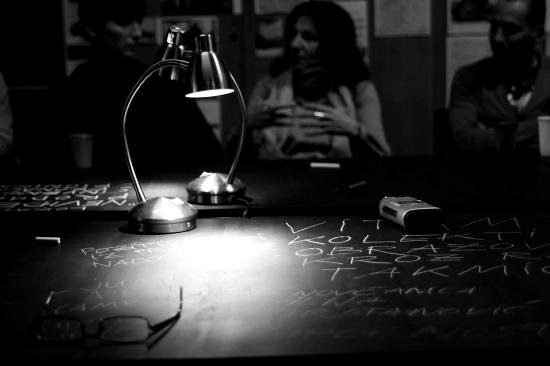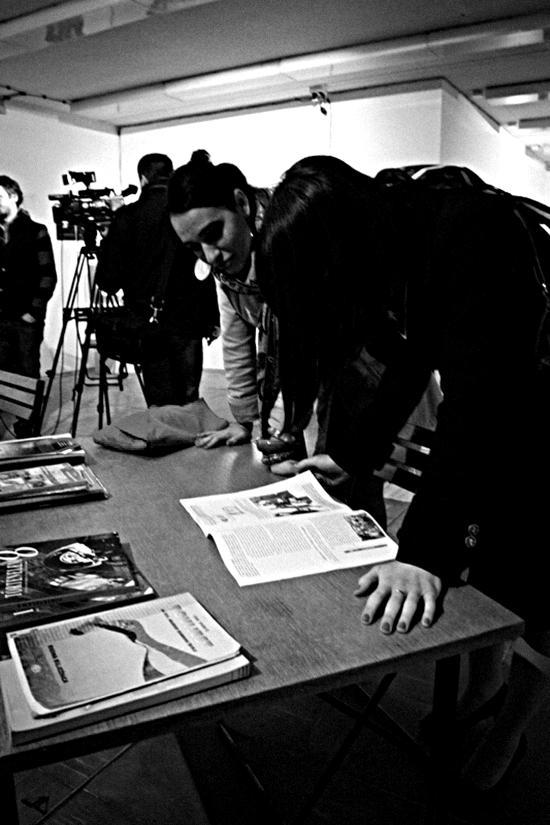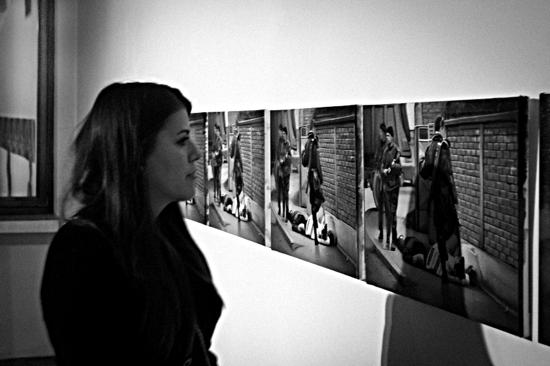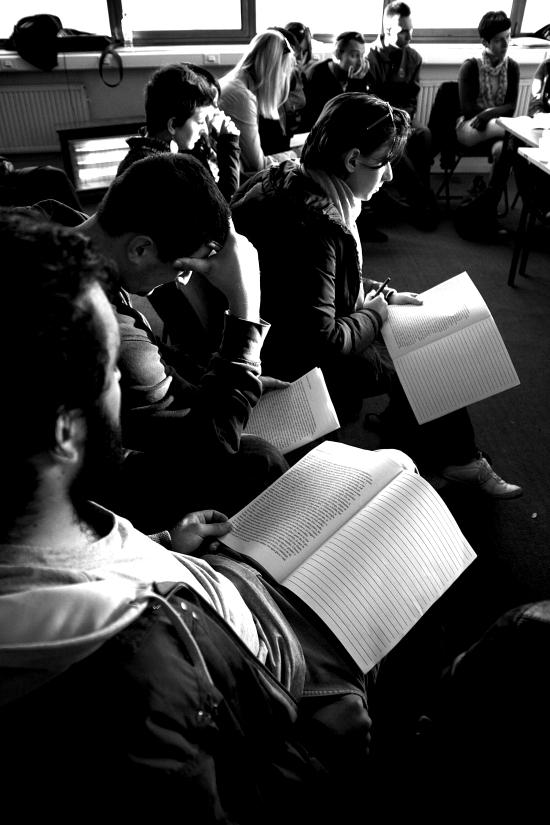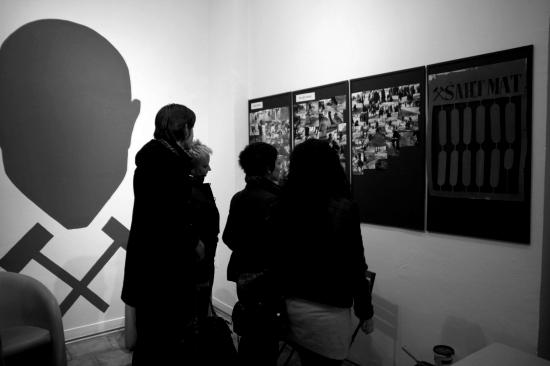Exposures
Where Everything Is Yet to Happen (WEIYTH)
2nd chapter: Exposures
SPAPORT BIENNIAL 2009/10
14 October – 30 November, 2010
Banja Luka, Mostar, Sarajevo – talks, seminars, workshops, exhibition
Participants:
Monument Group (Damir Arsenijevic, Jasmina Husanovic, Jelena Petrovic, Branimir Stojanovic, Milica Tomic) ® Work group Four Faces of Omarska (Mirjana Dragosavljevic, Srdjan Hercigonja, Sandro Hergic, Vladimir Miladinovic, Marija Ratkovic, Dejan Vasic, Jovanka Vojinovic, Zoran Vuckovac and Milica Tomic) | STEALTH.unlimited (Ana Dzokic & Marc Neelen) | Research archive Football as Metaphore of Life?' (Abart, Mostar) | Borut Separovic, Goran Fercec & 'Generation 91-95' | Igor Bosnjak | FACTUM Documentary Film Project | Lana Cmajcanin & Igor Grubic | Sandra Dukic & Boris Glamocanin | Flaka Haliti | Andrea Geyer | Nicole Hewitt | Amel Ibrahimovic | Margareta Kern | Radenko Milak | Renata Poljak | Vahida Ramujkic | Lala Rascic | Ivan Susnjar | Bojana Tamindzija
Developed by: DeLVe | Institute for Duration, Location and Variables
(Ivana Bago and Antonia Majaca)
Organized by: Protok – Center for Visual Communications, Banja Luka
Exposures, the second chapter of the long-term, collaborative project Where Everything Is Yet to Happen takes place in Banja Luka, Mostar and Sarajevo taking the form of an exhibition,as well as a series of seminars, workshops, and new productions. The project was initiated by a collaboration with a team of invited co-curators (Anselm Franke, Ana Janevski, Vit Havranek & Zbynek Baladran, Erden Kosova, Nina Montmann and Jelena Vesić) which resulted in the exhibition Can you speak of this? – Yes, I Can, in Banja Luka in 2009. Incited by the WEIYTH's underlying concept of a prospective rethinking of the notion of community, the artistic and curatorial propositions delineated in the first chapter opened up a set of topics, designating the course of the further development of the project: the issues of collaboration, complicity, articulation of trauma, exile and return, politics of language, politics of memory, culturalization of politics and politization of art.
These topics became a base for initiating new collaborations, gathering groups and constituting temporary communities of artists, theoreticians, activists, students and curators, in a process of creating new social and creative platforms generating new vocabularies that together form Exposures, the second chapter of the project. Like the first one, it keeps insisting on the question: "Can you speak of this?", where an affirmative answer points first of all to an acceptance of responsibility to articulate and question one's own position in relation to the historical, social and political context the project is set in, as well as in relation to particular topics it addresses. The project gathers artists, film-makers, and intellectuals who in their practice, deal with some of the many aspects of the trauma of the break-up of Yugoslavia: war, genocide, dissolution of the socialist economic and political system, transition into 'wild capitalism', destroyed economy, perpetuation of war 'by other means', as well as the influence of these dissolutions and disasters on the youngest generations, informed by fear and abjection toward the ethno-confessional Other.
Accepting our invitation to participate in this long-term curatorial, artistic, theoretical and transformational quest, and addressing the invitation to others, has emancipated the very process of searching while embracing the exposure to a state of radical uncertainty. For all involved in the process – organizers, curators, participants, guests and public – it has meant accepting the state (and action) of exposure without compromise - exposure also to the gap between the public's expectations formed by dubbing the project a 'biennial' and the decision to question exactly how such a project can subvert the imperative of spectacularity and representation; where 'art' as material product is secondary to the processes of political subjectivization and articulation of relations between all who have been, and who will yet become, involved in the process – exposure, most relevantly, of one to each other.
Programme:
Exhibition, Banja Luka
30.10.-30.11.2010
Rudi Cajavec Factory, Salon of the Museum of Contemporary Art, Public Space
Events (Mostar and Sarajevo):
14.10. 2010, 18.00 Lala Rascic, Damned Dam, performance and discussion, SCCA, Sarajevo
15.-16.10. 2010 Research archive Football as Metaphor of Life? (Abart, Mostar), discussion and presentation of the archive, OKC Abrasevic, Mostar
Events (Banja Luka: Rudi Cajavec Factory)
21.-22.10. 2010 Damir Arsenijevic (Monument Group), It's Time We Got to Know Each Other As We Really Are, poetry session
21.-22.10.2010. Vahida Ramujkic, Disputed Histories, workshop
Saturday, 30.10.2010
17.00 Lala Rascic, Damned Dam, performance
18.00 Lana Cmajcanin & Igor Grubic, 20,000, action, public space: Trg Krajine
18.30 Nicole Hewitt, Jasmina.Scripts, performance
19.00 Branimir Stojanovic (Monument Group) & Vladimir Jovic, presentation of the Mathemes of reassociation newspaper and discussion
21.00 Exhibition opening: Spaport on Spaport, introduction by the organizers
Sunday, 31.10. 2010
11.00-14.00 Jelena Petrovic (Monument Group) & Stanislav Tomic, The History of the Present, public reading
15.00-18.00 Jasmina Husanović (Monument Group), Against the Death of the Political Subject. On Cultural Production and Emancipatory Politics, public discussion
18.00 Margareta Kern, GUESTure, lecture
19.00 Work Group Four Faces of Omarska (Mirjana Dragosavljevic, Srdjan Hercigonja, Vladimir Miladinovic, Marija Ratkovic, Dejan Vasic, Jovanka Vojinovic, Zoran Vuckovac and Milica Tomic), public meeting of the group
01.11.-07.11.2010
STEALTH.unlimited (Ana Dzokic & Marc Neelen), Taking Common Matters Into Your Own Hands, a series of open talks and research archive
01.11. 2010, 17.00
Sandra Dukic & Boris Glamocanin, Ljubija kills, presentation of the project, Salon of the Museum of Contemporary Art


